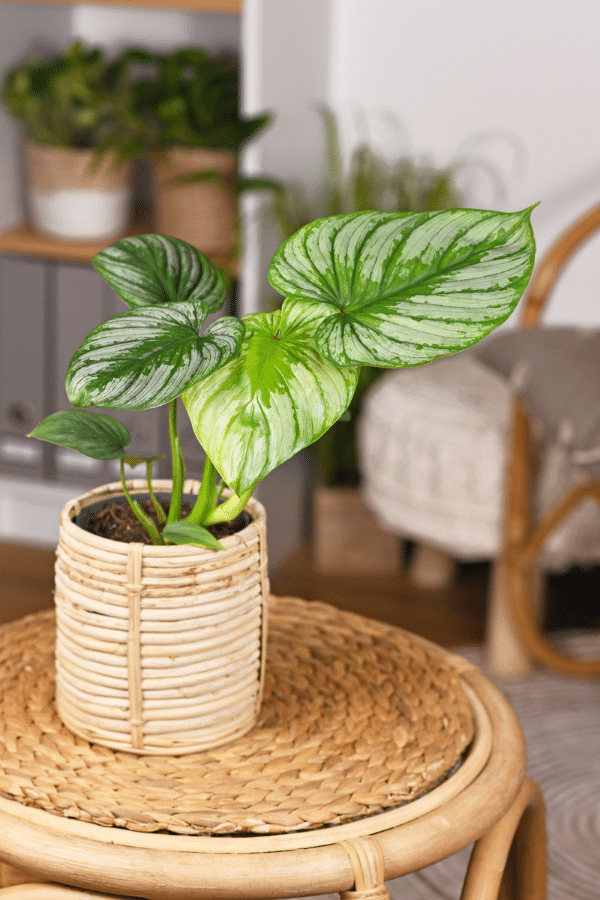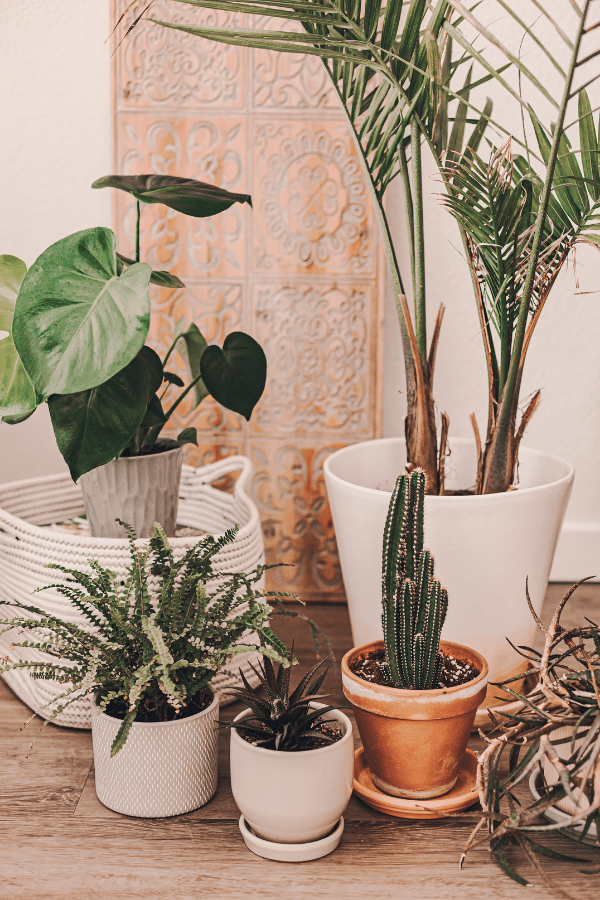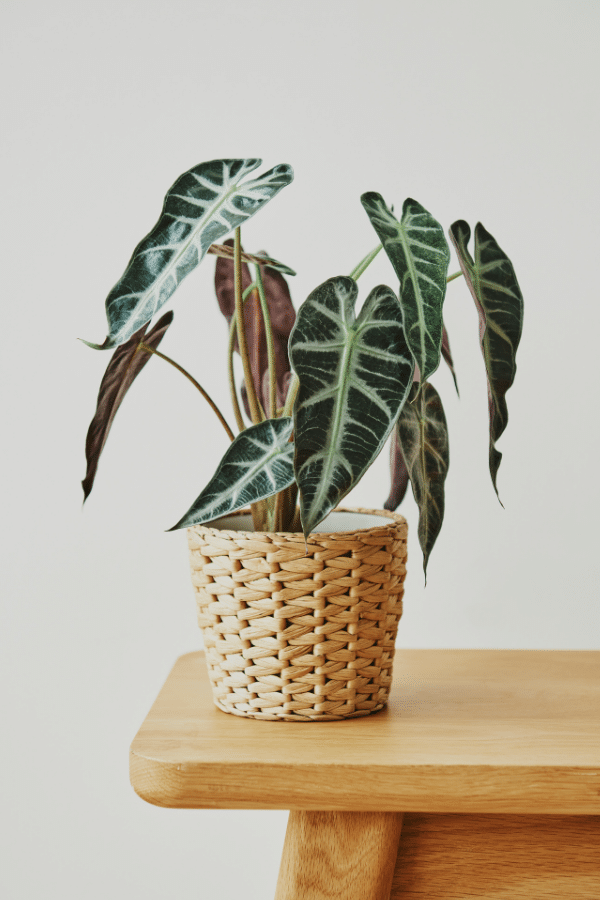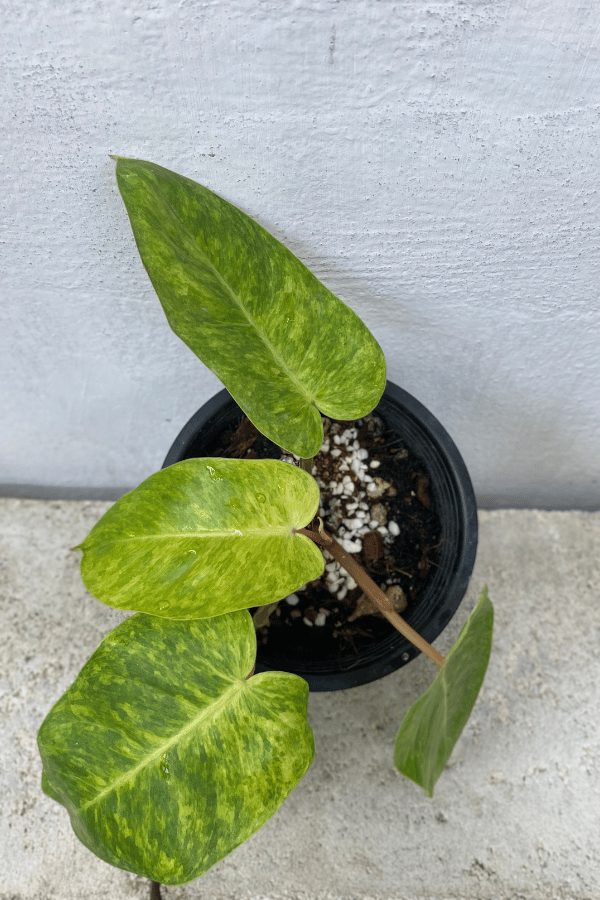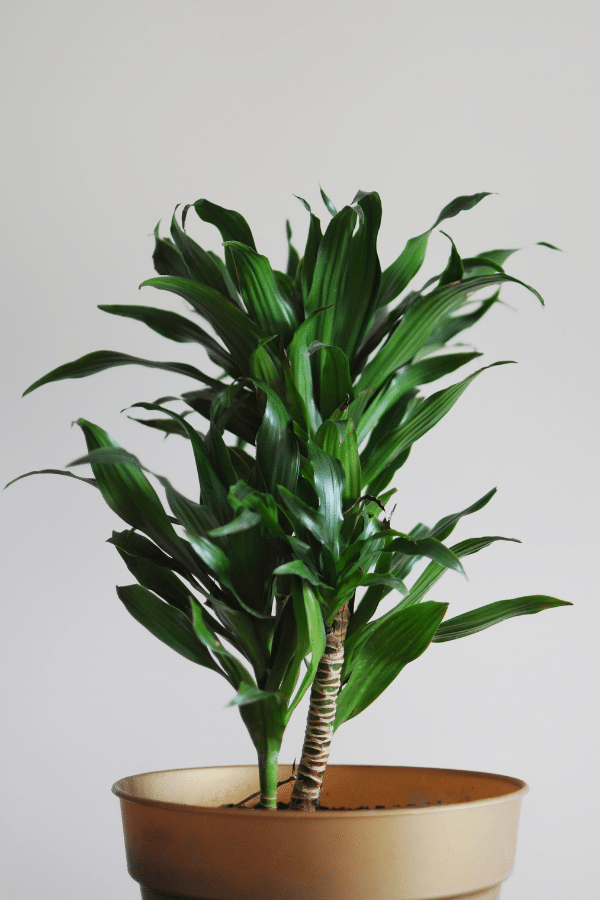Strawberry Begonia
Scientific Name: Saxifraga Stolonifera
Common Name: Strawberry Begonia
The Strawberry Begonia is a gorgeous, houseplant that will trail and grow very fast. Bringing color to your plant collection, this plant features pink to red leaves that are fuzzy. This plant is great for beginners as it’s very easy to grow as long as you know Strawberry Begonia care items well, which we will go over everything you need to know to keep this plant healthy.
Quick Care Overview
| Common Name | Strawberry Begonia |
| Scientific Name | Saxifraga Stolonifera |
| Family | Saxifragaceae |
| Origin | Asia |
| Growth Rate | Fast |
| Identification | Red-tinged, hairy leaves with thin runners |
| Height | Up to 2 feet tall |
| Soil | Equal parts of peat moss to perlite |
| Water | Water when the top two to three inches of soil have dried |
| Temperature | 50-75F |
| Sunlight | Bright indirect sunlight |
| Toxic to Cats & Dogs | No |
| Toxic to Humans | No |
| Pests | Mealybugs and aphids |
| Diseases | Root rot |
Below we will dive deep into how to care for Strawberry Begonia.
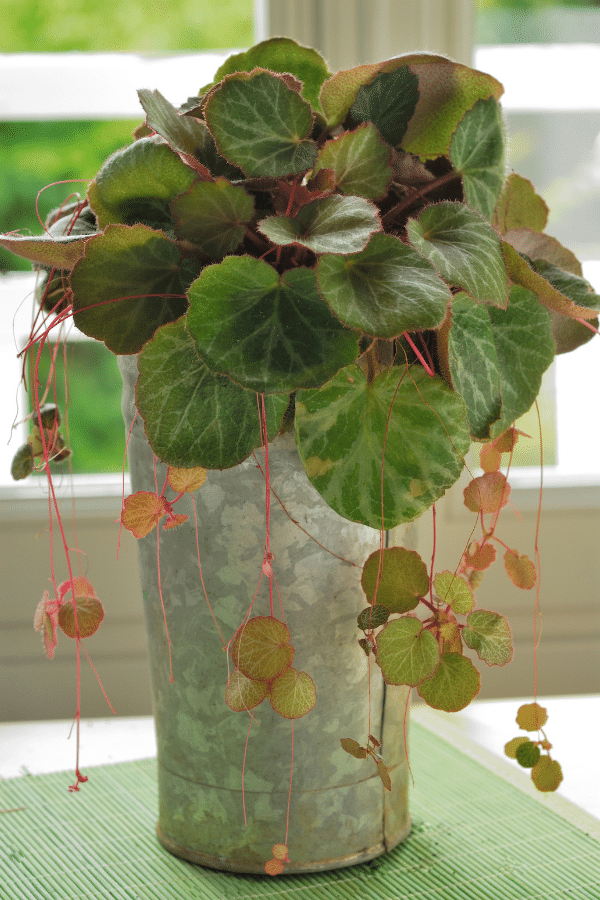
Strawberry Begonia History
The Strawberry Begonia, also known as Saxifraga Stolonifera, roving sailor, or strawberry geranium, or ‘mother of thousands’ is an eye-catching plant that is neither a strawberry nor a begonia. This Asia native has a beautiful appearance with hairy, red-tinged leaves and scattering leaf runners. Growing the strawberry begonia is easy. This quick-growing plant is attractive and easy to care for.
Strawberry Begonia Identification
While commonly classified as a groundcover, this plant develops thin runners that cascade down to show clusters of leaves when grown indoors. Leaves are hairy and red-tinged and appear to shower down. Saxifraga stolonifera comes in several different varieties, with ‘Saxifraga’ and ‘Tricolor’ being the most popular. ‘Saxifraga’ presents with light green leaves that have silver veining. ‘Tricolor’ presents with halos around the leaf’s margins.
To get Strawberry Begonias to turn small white flowers in spring, place the plant in a cooler spot near the end of winter with no fertilizing and minimal watering. Middle of spring, resume regular maintenance and watch this charming plant sprout tiny white flowers.
Strawberry Begonia Growth Facts
Due to this plant’s cascading and sprawling nature, this plant is well suited to hanging planters when grown indoors. In addition, this plant is fast-growing and quick to spread.
How Big Does a Strawberry Begonia Get?
While traditionally a low-growing groundcover, when grown indoors, stolons may cascade down to a length of 1-2 feet.
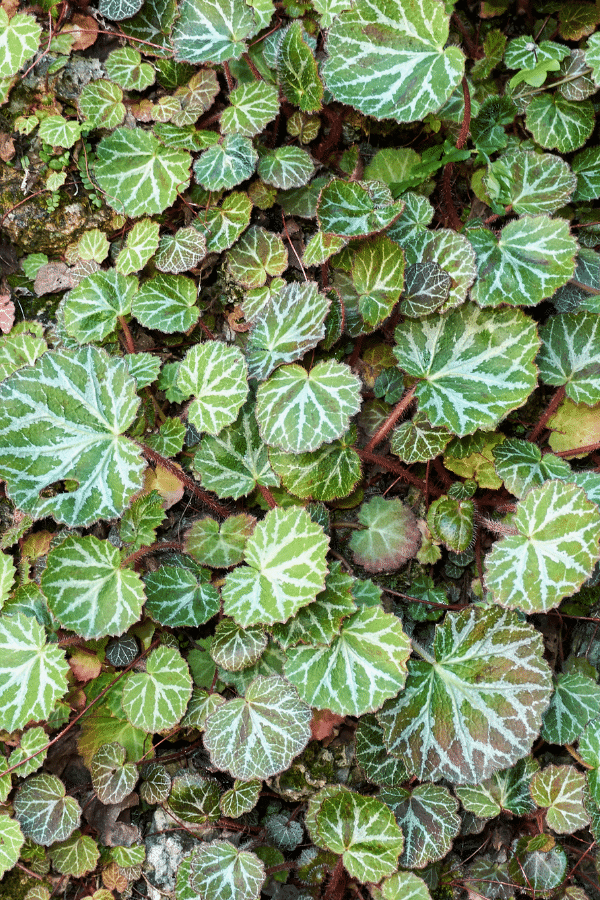
Strawberry Begonia Care
This plant may be grown indoors easily any time of year and will proliferate.
Searching for a new houseplant?
Take our houseplant quiz to see what your next plant should be based on the room it’s in, the specific lighting the room receives, if you want it on the floor or on the table, and much more!
Strawberry Begonia Soil
The Strawberry Begonia indoor plant will appreciate being grown in an equal mixture of peat moss to perlite with a neutral to acidic pH. This plant requires a growing medium with adequate water retention capacity coupled with proper drainage. Additions of coarse sand may also aid in allowing for good drainage.
Strawberry Begonia Fertilizer
The Strawberry Begonia will enjoy a weekly feeding during the growing season from a diluted liquid fertilizer that contains micronutrients. Ensure that you select a balance fertilized indicated for houseplants and that you follow all label instructions. Overfertilizing may lead to chemical burn. Slow-release granular pellets may also be utilized.
Strawberry Begonia Watering
The Strawberry Begonia plants are avid growers that will require a lot of water during the warm growing season of spring and summer. It is essential to avoid getting water on the Strawberry Begonias leaves to reduce the risk of fungal disease. You should rewater your Strawberry Begonia after the top two to three inches of soil has dried out. Watering frequency may be reduced in winter by about half but ensure that you do not allow your plant to dry out completely.
Strawberry Begonia Light Requirements
Growing Saxifraga Stolonifera is not difficult at all. This plant will need a lot of bright indirect light. The strawberry begonia is very sensitive to heat, so ensure it is placed in a well-ventilated room. Keep in mind that too much direct sunlight will cause this plant to burn. East or west-facing window will suit your Strawberry Begonia nicely. It is also important to note that when given insufficient light, the Strawberry Begonias growth will be stunted.
Strawberry Begonia Temperature & Humidity
Unlike many other houseplants and being a member of the Xaxifrage family, the Strawberry Begonia prefers to stay in cool temperatures rather than warm and can be kept at temperatures as low as 50 degrees Fahrenheit with no issues. Saxifraga Stolonifera will enjoy growing in temperatures between 50 to 75 degrees Fahrenheit. If placed in warmer temperatures, this plant will suffer, so be sure to keep it in a cooler space in the home. The strawberry begonia does not require higher than average humidity to thrive. However, dry and crispy leaves indicate that this plant is not receiving enough moisture. These plants are highly susceptible to fungal disease, so it is crucial to ensure that humidity and heat levels are not too high.
Repotting Strawberry Begonia
These plants are prolific spreaders and should be repotted in a new, larger pot than its current one with adequate drainage holes every 2-3 years or so, as the health of the mother plant will decline and start to become sparse and woody. As this plant is extremely easy to propagate through its baby plantlets attached by runners, repotting a new mother plant every few years through propagation should be quite simple.
Strawberry Begonia Maintenance & Pruning
The Strawberry Begonia has rapid growth during the summer months and will produce many plantlet clumps that will consume a container very quickly. Plantlets attached by stolon’s may be clipped by clean shears and any discolored or dried plant material should be removed periodically. If you have the space for this plant to trail and trail, you can just let it grow. If not, you will want to prune often. Never prune more than 1/4 of the plant at any given time and wait a few months to prune again.
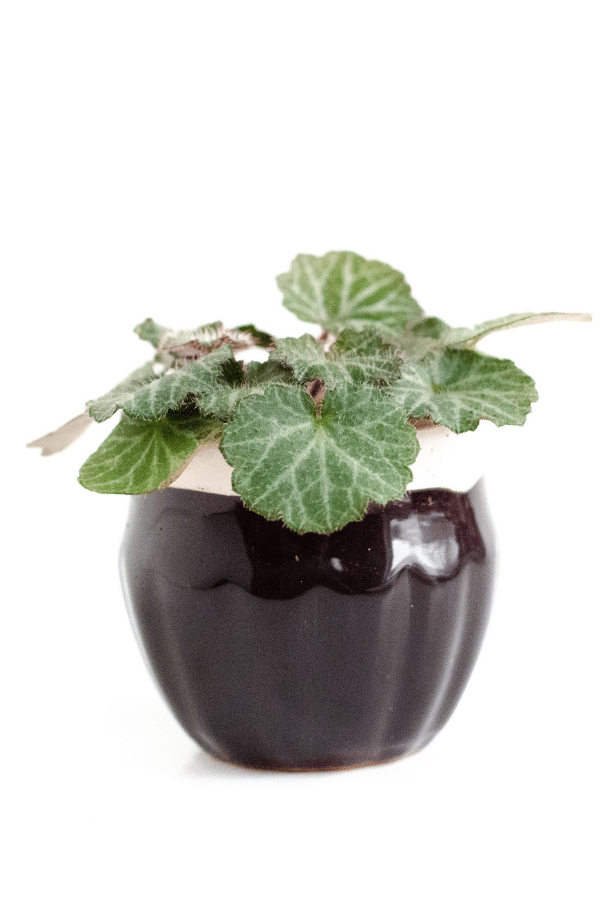
Strawberry Begonia Propagation
The Strawberry Begonia’s propagation is easy, but way different than other houseplants. The mother plant offsets many baby plantlet runners. Simply insert some plantlets from the runners and plant them into the soil in a separate container, leaving the runner attached to the mother plant. The runner plantlet will have developed roots in a few weeks and may be separated from the mother plant. Snip the runner, and the clone will be ready to grow.
Strawberry Begonia Toxicity
Considered pet-friendly, Strawberry Begonia is not toxic to humans or pets.
Toxicity to Humans
The Strawberry Begonia is considered non-toxic to humans.
Toxicity to Cats & Dogs
Luckily, the Strawberry Begonia is considered non-toxic and safe for pets.
Strawberry Begonia Problems
Strawberry Begonia Leaves Turning Yellow
Yellow leaves may be due to both underwatering, overwatering, or age when it comes to the Strawberry Begonia.
Strawberry Begonia Leaves Turning Brown
Crisped, brown leaves are likely an indicator of too little water or too much sun exposure. It may also be due to age and indicates that your strawberry begonia should soon be replaced if the plant is looking browned and woody.
Strawberry Begonia Diseases
The Strawberry Begonia is very susceptible to root rot and fungal problems. It is pertinent not to overwater or allow this plant to sit in too hot of temperatures or too high of humidity. Ensure that your plant has adequate drainage and is not sitting in standing water in the plant’s drainage tray.
Strawberry Begonia Pests
The Strawberry Begonia is susceptible to mealybugs and aphids, as are many fleshy plants. Upon inspection of infestation, remove diseased foliage and treat it with insecticidal soap. Be sure to follow all label instructions. Isolate this plant from other plants to reduce the spread of the infestation.
FAQ
Do Strawberry Begonias Like Sun or Shade?
Strawberry Begonias like sunlight, indirect light is best rather than direct sunlight. West or east-facing windows are best for this plant.
Is a Strawberry Begonia a Real Begonia?
Unlike the name of this plant, Strawberry Begonia is not a real begonia or a strawberry plant. The leaves of the Strawberry Begonia resemble a Begonia plant while the way this plant grows resembles a strawberry plant, giving it the name of Strawberry Begonia.
Why Is My Strawberry Begonia Leaves Curling?
The leaves on Strawberry Begonia curl when the plant is receiving too much water or it doesn’t have the soil it needs to drain the water. Provide it with adequate well-draining soil and only water when the top two to three inches of soil has become dry.
Why Is My Strawberry Begonia Drooping?
Strawberry Begonia can droop for many reasons. Too much or too little water can cause drooping as well as the temperature being too high for the plant. Give the plant a temperature between 50-75F and allow the soil to dry out a bit before rewatering.
Are Strawberry Begonias Rare?
While not easily accessible, you can find strawberry begonias at local nurseries and gardens if you search hard.
Are Strawberry Begonias Invasive?
Strawberry Begonias are non-invasive, but they are very fast growers. They can easily be pulled out of a garden or pruned and propagated when outgrown.

